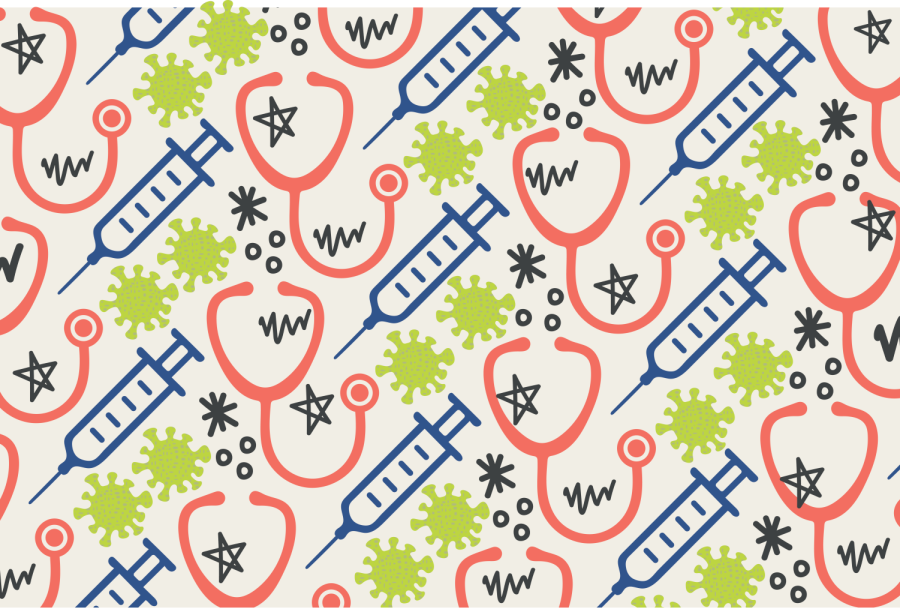As the air has gotten colder, the dreaded cold season has returned in full force, but this winter, a combination of rising COVID-19, flu and Respiratory Syncytial Virus (RSV) infections has increased the risk of illness.
In response to this “tripledemic,” the University of Minnesota has sent out several emails to all students with information on how to stay healthy during the holiday season.
The University’s Boynton Health recommends students get their flu shot and stay up to date with COVID-19 vaccinations. They also recommend students stay at home if they feel sick, get tested for COVID-19 if they have symptoms, wear a mask and wash their hands regularly.
“Tripledemic” versus pandemic
RSV is a common respiratory virus that has cold-like symptoms, according to the Center for Disease Control and Prevention (CDC) website. While normally mild in adults, it can be more severe in young children and older adults.
There is currently a higher volume of serious RSV infections than in recent years, said Stacene Maroushek, a pediatrician at Hennepin County Health Center in Minneapolis and assistant professor in the University’s Department of Pediatrics.
Young children have not been exposed to RSV during the last three years due to COVID-19 protocols like masking and quarantine, but the lack of these precautions this winter has contributed to the recent rise in cases, Maroushek said.
Hospitalizations, specifically of young children, began to rise at the end of October, according to data from the Minnesota Department of Health.
The RSV strain appeared before the COVID-19 pandemic was aggressive, Maroushek said. This more aggressive strain is still being circulated, and combined with the fact many young children have not been exposed to RSV, the severity of the infections has increased.
The flu is an easily-spread, common respiratory disease that comes from a strain of the influenza virus, according to the CDC. Symptoms are similar to those of RSV, including fever, cough and sore throat.
COVID-19 disturbed the niches of these seasonal infections, and now they are showing up all at once, Maroushek said. With peak flu season typically starting in December and lasting through February, infections started rising in November.
According to data from the Minnesota Department of Health, there have been 1,857 influenza hospitalizations in this year’s flu season as of Dec. 3. Last year’s flu season reached a total of 901 hospitalizations.
In addition, many people are not vaccinated for it.
According to the most recent CDC data, 58% of people between six months and 17 years old in Minnesota received their flu shot last year.
On top of the flu and RSV, COVID-19 cases are also on the rise, with a 25% increase in total cases in Hennepin County over the past week, according to the CDC’s COVID-19 data tracker.
The phenomenon of these three rising infections has been dubbed a “tripledemic” due to the potential of what these rising cases could mean for health care workers, according to Yale Medicine.
“It means we are all really tired,” Maroushek said.
Health care workers have been double-booking appointments to make sure sick kids are seen, Maroushek said. The emergency rooms have also been busier because their overflow patients are normally sent to the emergency room.
“It really is overfilling the system that exists right now,” Maroushek said. “Just like what we were worried about with COVID-19 and swamping the system, that’s what’s happening now with RSV, COVID-19 and influenza.”
Levels of concern vary among students
The University released a press release on Nov. 16 in response to the rise in RSV, flu and COVID-19 infections, including basic guidelines for traveling safely during the holiday season and recommendations for preventing illness, like receiving the flu shot.
University students like College of Liberal Arts (CLA) student August Mentch are not satisfied with the University’s response to the rise in infections and worry the University is not taking the tripledemic seriously enough. Mentch said they would like to see the University increase and reinforce precautions like masking and social distancing, similar to earlier in the pandemic.
“[There’s a] lack of care from the University and the city as a whole,” Mentch said. “Especially in comparison to previous years.”
University and Carlson School of Management student Elliot Riley also said people could do more to protect themselves and others from getting sick.
“I definitely would prefer if people were a little more proactive,” Riley said, referring to people getting their flu shot, in particular.
Other University students, such as CLA student Bas Richter and College of Science and Engineering student Augustus Brown, echoed similar sentiments but expressed less concern about getting sick.
“Usually, it’s not the biggest concern of mine,” Richter said.
Brown said he thinks people learned from the pandemic and now take more precautions when they feel sick.
Maroushek said it is crucial for people to continue washing their hands, wearing a mask and staying home if they are feeling sick.
“Masks are good for most of the respiratory viruses, not just COVID,” Maroushek said.
Both COVID-19 and the flu are preventable through vaccination, which is why it is important for people to stay updated on their shots this winter, Maroushek said.
“It’s never too late to get vaccinated,” Maroushek said.
As of Sunday, Boynton Health is offering walk-in flu and COVID-19 vaccinations Monday-Friday in Boynton’s lobby from 9 a.m. to 3 p.m. Boynton Health also offers COVID-19 testing and home testing kits.



















